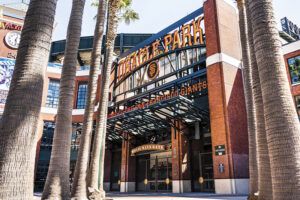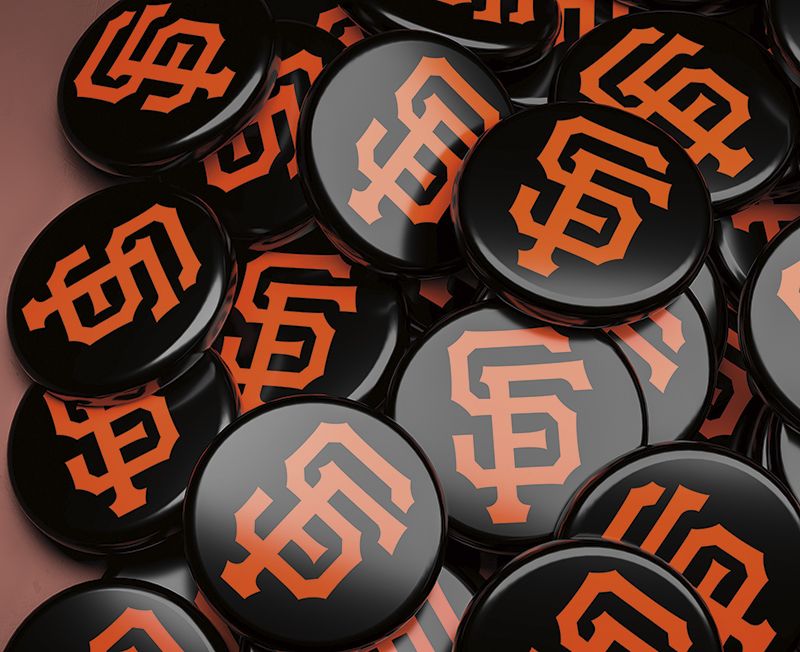San Francisco Giants – An Optimistic Outlook
After losing the National League Division Series (NLDS) to the Cubs in 2016, the team faltered, having a mere .440 winning percentage (210–272) from 2017–2019. In the 2020 season, things began to look up, as Zaidi’s buy-low signings propelled the team on-base plus slugging percentage (OPS) from .696 to .785, and the team just missed the playoffs.
In 2021, the Giants took a massive leap, producing 241 home runs and an astounding 107–55 record (franchise records for single-season home runs and wins). They finished with the most wins in the league, but unfortunately, they ran into the hefty 106-win Dodgers in the NLDS and lost… yet again.
It seemed like things were getting better… but surprisingly, it has only been downhill since then.
The team’s progress seemed to completely vanish in 2022. The magic of their revamped lineup and pitching seemed to completely disappear, with the OPS dropping from .769 to .705, and their 3.24 Earned run average (ERA) to 3.85, resulting in an 81–81 record.
The 2023 season proved to be even worse (79-83). While starting the season off well, with a 49–41 first-half record, the Giants fell astronomically after the All-Star break. The pitching was decent, but rookie players, such as Casey Schmitt and Patrick Bailey, went from hot starts to purely awful at hitting, along with the rest of the lineup. The Giants finished the last two months with a 9–19 record, and even fired then-manager Gabe Kapler before the season ended!
Future Outlook
So, what now? Most Giants fans, like me, are worried about their lack of progress, signings, and future outlook. Looking closer, I see a potential positive path for the team going forward.
A key part of my optimism for this team lies in Bob Melvin becoming the new manager. Melvin is experience epitomized, with a career .516 winning percentage and eight post-season appearances in 20 years of managing. In addition, Melvin has added some new, more experience-heavy, coaches to his staff, including new co-hitting coach Pat Burrell, third base coach Matt Williams, and bench coach Ryan Christenson.
A more experienced and reputable coaching staff, especially with Melvin, will contribute to better fundamentals and locker room culture. Bob Melvin is a proven winner, motivator, and players’ guy, while Gabe Kapler was more lax and of a free-reign coach.
Our signings thus far, with Jung Ho Lee, Jordan Hicks, and Robbie Ray, are encouraging. But they only help us a bit, and Robbie Ray will not even play until the second half of 2024. There’s more to do, and here are some additional courses of action I think the Giants could greatly benefit from:
1. Be diligent with young players’ development.
Beyond just giving our emerging young players playing time in the Majors, there are a couple of extra steps the Giants can take.
Firstly, the hitting staff should focus on the rookies’ hitting mechanics and power (big issues last year) and evaluate how they do in Spring Training/practices. If some have an especially rough start before the regular season begins, have them start in the minors for a little while, to get their legs under them. It’s wiser to focus on their improvement/readiness, rather than throwing them into the majors and risking their confidence and rhythm.
In addition, player development could benefit from having a strong veteran-leader locker room presence.Signing vets to be role models impacting team culture, is something often done in the NBA not MLB, but I think the Giants could greatly benefit from it. The organizational culture has been quite nonchalant lately, and devoid of vocal leaders in the clubhouse.
Some examples of suitable free agents for this: Kevin Pillar (35 years old), Elvis Andrus (35), Whit Merrifield (35), Brandon Belt (36), Corey Kluber (38), and Justin Turner (39).
2. Utilize Trades
A common theme with this team is having a myriad of just decent, cheap players, who take up an extensive amount of salary and roster space. Suppose we trade a lot of this filler, plus Joey Bart and some young minor leaguers. In that case, we can free up a sizeable portion of salary (and roster space for emerging rookies) while getting more impactful starters (like the Robbie Ray trade).

Even during the season, if we find ourselves with too much depth, we should target rebuilding teams as trading opportunities, and work with them to acquire older, higher-quality players they do not currently need.
Examples of players to deal with include Michael Conforto (OF), Austin Slater (UTIL), J.D. Davis (UTIL), Joey Bart (C), Aeverson Arteaga (IF), Jairo Pomares (OF), and Onil Perez (C).
3. Address the roster’s main weaknesses through major signings
This is a franchise with a lot of money but often doesn’t end up using all of it. Instead of only signing undervalued depth pieces, we should pivot to making multiple deep splashes across the board. After all, we can afford to overpay for major talents who can improve the roster and create a winning culture for our emerging rookies to thrive.
Players to Target:
- Hitting: Rhys Hoskins (1B), Brandon Belt (1B), Matt Chapman (3B), Tommy Pham (OF), Cody Bellinger (OF), Adam Duvall (OF)*, Jorge Soler (OF), J.D. Martinez (OF)
- Pitching: Blake Snell (LHP), Jordan Montgomery (LHP), Brandon Woodruff (RHP), Noah Syndergaard (RHP), Mike Clevinger (RHP)
I know the Giants have been heavily rumored for some major free agents. Acquiring at least 3–4 of these players could give this team the jolt it needs, and it would add at least 8 total wins (through Wins Above Replacement).
For next season, I predict this team will win 85 games, so long as the front office and management make the right moves. All in all, this San Francisco Giants team has been through a lot of change in the last ten years and is about to undergo a lot more. But that isn’t necessarily a bad thing. With a new coach in Bob Melvin, many emerging youngsters, and current and impending player acquisitions, there is a lot to be excited about next year for us Giants fans.


